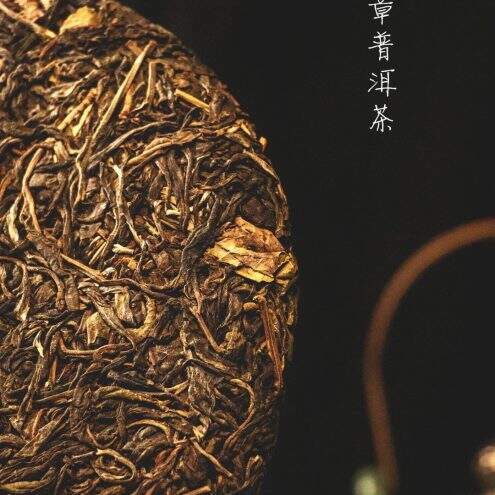Lao Ban Zhang Pu-erh: 7 Reasons Why This “Tea King” Dominates Luxury Markets
When it comes to premium Pu-erh tea, one name reigns supreme: Lao Ban Zhang. Known for its bold character, lingering sweetness, and unmatched complexity, this raw Pu-erh (sheng cha) isn’t just a tea—it’s an experience. Whether you’re a seasoned tea collector or a curious newcomer, Lao Ban Zhang’s legendary status in the tea world demands attention. Let’s dive into what makes this tea a true emperor among teas.
The Legendary Roots of Lao Ban Zhang
Nestled deep in the misty mountains of Yunnan’s Bulang Mountain region, the village of Lao Ban Zhang has been cultivating tea for centuries. While exact historical records are sparse, locals trace their tea-growing heritage back to the ancient tea horse road era, where Pu-erh was traded as currency. The village’s remote location and strict adherence to traditional farming methods have preserved its tea trees, some of which are over 500 years old.
Lao Ban Zhang’s reputation exploded in the early 2000s when tea enthusiasts began recognizing its uniquely powerful flavor profile. Today, it’s synonymous with luxury Pu-erh, often dubbed the “King of Bitter-Sweetness” for its intense initial bitterness that melts into a honey-like sweetness.
Terroir: Where Nature Brews Perfection
Great tea starts with great terroir, and Lao Ban Zhang’s geography is nothing short of magical. Located at an altitude of 1,700–1,800 meters, the village enjoys a subtropical climate with ample rainfall, cool nights, and mineral-rich soil. These conditions stress the tea trees, forcing them to develop concentrated flavors and aromatic compounds.
The old-growth tea trees here grow wild alongside camphor and fruit trees, creating a biodiverse ecosystem that subtly influences the tea’s flavor. Farmers harvest leaves only once a year (in spring) to preserve the trees’ vitality, ensuring each batch carries the essence of the land.
Flavor Profile: A Symphony of Power and Grace
Lao Ban Zhang raw Pu-erh is not for the faint of heart. Its first sip hits you with a bold, almost medicinal bitterness—a characteristic locals call “ba qi” (霸气), meaning “dominant energy.” But hold on! Within seconds, that bitterness transforms into a radiant sweetness that coats your throat, lingers for hours, and leaves a cooling sensation known as “hui gan.”
Here’s what sets it apart:
Aroma: Floral, with hints of orchid, honey, and a touch of smokiness from traditional processing.
Texture: Thick and oily, like liquid silk.
Aftertaste: The sweetness crescendos with each sip, often described as “drinking sunshine.”
Cha Qi: Many drinkers report an energizing, almost meditative “tea energy” that uplifts both body and mind.
Health Benefits: More Than Just a Pretty Flavor
Beyond its taste, Lao Ban Zhang is prized for its health-boosting properties. Like all raw Pu-erh, it’s packed with antioxidants, polyphenols, and enzymes that:
Aid digestion (perfect after a heavy meal!)
Support metabolism and weight management
Reduce inflammation
Enhance mental clarity
Aging potential adds another layer of value. Over time, the tea mellows, developing deeper flavors and increased health benefits, making it a favorite among collectors.
Craftsmanship: Tradition Meets Precision
Creating Lao Ban Zhang raw Pu-erh is an art form passed down through generations. Here’s a peek at the process:
Hand-Picking: Only the finest spring buds and leaves are harvested.
Withering: Leaves are sun-dried to reduce moisture.
Kill-Green (Sha Qing): Briefly pan-fired to halt oxidation, preserving the tea’s “raw” status.
Sun-Drying: Leaves dry naturally under Yunnan’s strong sunlight, locking in freshness.
Stone-Pressing: The dried leaves are steamed and pressed into cakes using traditional stone molds—a step believed to enhance aging.
No shortcuts here! Every step respects tradition, ensuring the tea’s soul remains intact.
Why Lao Ban Zhang Commands Top Dollar
With prices ranging from hundreds to thousands of dollars per cake, Lao Ban Zhang isn’t cheap—but there’s a reason.
Rarity: Only about 5,000 kg are produced annually from ancient trees.
Labor-Intensive Process: Every cake is handmade.
Aging Potential: Like fine wine, it appreciates in value. A well-stored 20-year-old cake can sell for over $10,000!
Cultural Status: It’s a symbol of prestige among tea connoisseurs.
How to Brew Like a Pro
To fully appreciate Lao Ban Zhang’s magic:
Use a small clay teapot or gaiwan.
Rinse the leaves briefly with hot water (95°C) to awaken them.
Short steeps: Start with 5–10 seconds, increasing time with each infusion. Expect 15+ brews from high-quality leaves!
Savor slowly: Let the bitterness and sweetness dance on your palate.
Final Thoughts: A Tea Worth the Journey
Lao Ban Zhang raw Pu-erh isn’t just a beverage—it’s a storyteller. Each sip carries the history of Yunnan’s mountains, the dedication of its farmers, and the transformative power of time. Whether you’re chasing its legendary hui gan, investing in a future heirloom, or simply treating yourself to life’s finer pleasures, this tea delivers an unforgettable adventure.
Ready to taste the pinnacle of Pu-erh? Your throne (and teacup) awaits. 🍵✨













Add comment
You must be logged in to post a comment.